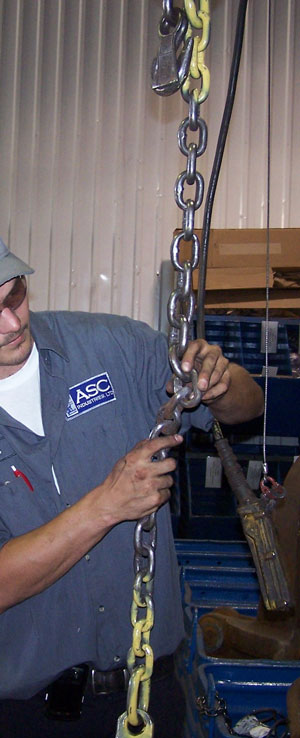Are you asking the right questions about inspections? Inspections of slings, crane hooks, and lifting devices are required at least once a year. How do you know that your inspector is competent? The lowest bidder may not always be the best choice.
Make sure that your inspector has been trained and has the knowledge necessary to provide you with a thorough inspection. He should be certified in Non Destructive Testing (NDT) by a credible institution.
A good sling inspection program should provide a complete recorded history of each sling. By keeping a running history of all slings, changes in its condition can be monitored and compared over its service life. Slings are required by the OSHA 1910.184 and the ASME B30.9 specifications to undergo inspections. The purpose of the inspections are to assess the condition of the sling to determine if there are any conditions present that are unsafe or could make it hazardous to use. These inspections are broken down into three types:
At the conclusion of your inspection, ASC’s inspector will provide you with copies of your inspection report and answer any questions you may have about the condition and safety of your lifting devices. ASC’s inspectors will assist you with any follow up questions as well. Just Call!
You should always feel confident about the condition of your lifting devices and a thorough inspection by a trained professional will provide that confidence.

Email: info@ascindustries.com
Phone: 708-647-4900